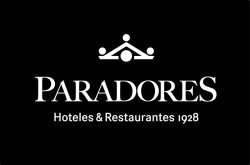Description
Parador de Tordesillas - Castilian Manor House (4*)
The historic town of Tordesillas, located at an important crossroads between Valladolid and Salamanca, is famous for the Treaty of Tordesillas, by which Spain and Portugal agreed to divide the New World between them in 1494. It was also here that the tragic queen, Joanna of Castile, was confined during her final madness.
Today there are still many fine old buildings to be seen, including the Royal Monastery of Santa Clara, originally a palace built in the 14th century. The Parador de Tordesillas, a traditional Castilian manor house, has a fine pillared portico and an elegant interior, with a number of valuable antiques. In the spacious garden, surrounded by a pine grove, there is an outdoor pool and a children’s play area, while the hotel building itself houses a heated swimming pool, plus a gym, a sauna and a Turkish bath. Specialities at the restaurant include oven-roasted lamb and pork, Cecina de vaca (dried beef), Bacalao a la fonda (salt cod with crayfish) and Biscuit de piñones (frozen cream with pine nuts).
There is garage parking at this Parador.



Add a comment